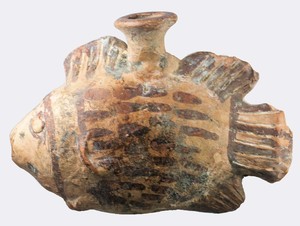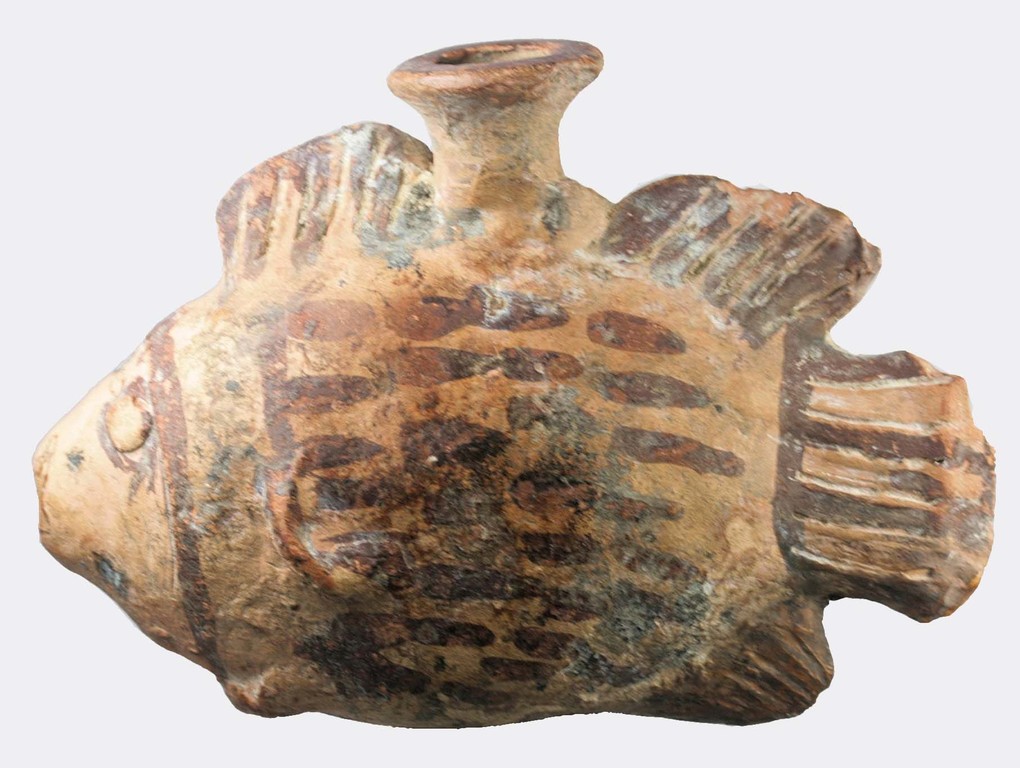?Cypriot fish askos: Late Cypriot III
A rare pottery flask or askos vessel in the form of a fish with painted, applied and incised details. Probably Cypriot or Egyptian.
The Early Bronze Age link of animal modeling with cult fertility and funerary use seems to have largely died out as Greek culture, religion and language became dominant in the early Iron Age, following large scale immigration triggered by the collapse of Mycenaean civilisation. Already, the range of animals represented had spread beyond the horned animals found in Cyprus of the EBA I & II and the addition of birds in EBA III and thereafter. Imported Mycenaean pots frequently depicted fish and octopuses and this askos may derive from Mycenaean originals of the late Bronze Age, or be influenced by contemporary Egyptian depictions. Fish were still a very rare subject in the Geometric period, though often depicted on jugs in the Archaic period, especially as the prey of water birds.
Although Cypriot comparanda are hard to find and Egyptian fish askoi are relatively common, the latter usually has a mouth aperture and the colours are unlike Egyptian examples and depiction of scales is different (curved vertical lines rather than dashes as here). West Asian examples are also stylistically different and a few Levantine examples are generally incised and burnished rather than painted. A Late Cypriot example in Liverpool has similar depiction of scales though the shape is more typical ofEgyptThe few known from the periodV Karageorghis in :The Choroplastic art of Ancient Cyprus listed no Geometric representations of fish and only one Archaic (despite, as he pointed out, their frequent painted representation on jugs).
Lower tail fin restored, some chipping and light wear.
Size: 7.6 x 10.6 cm
(Ex. collection: Johnny Noble, Laird of Ardkinglass, Argyllshire, Scotland (1936-2002). Acquired 1980's on the London art market, with Faustus Fine Art (now no longer in existence, making persuit of earlier history problematic).)
(Aquired Helios Gallery July 2016)
DJ70

